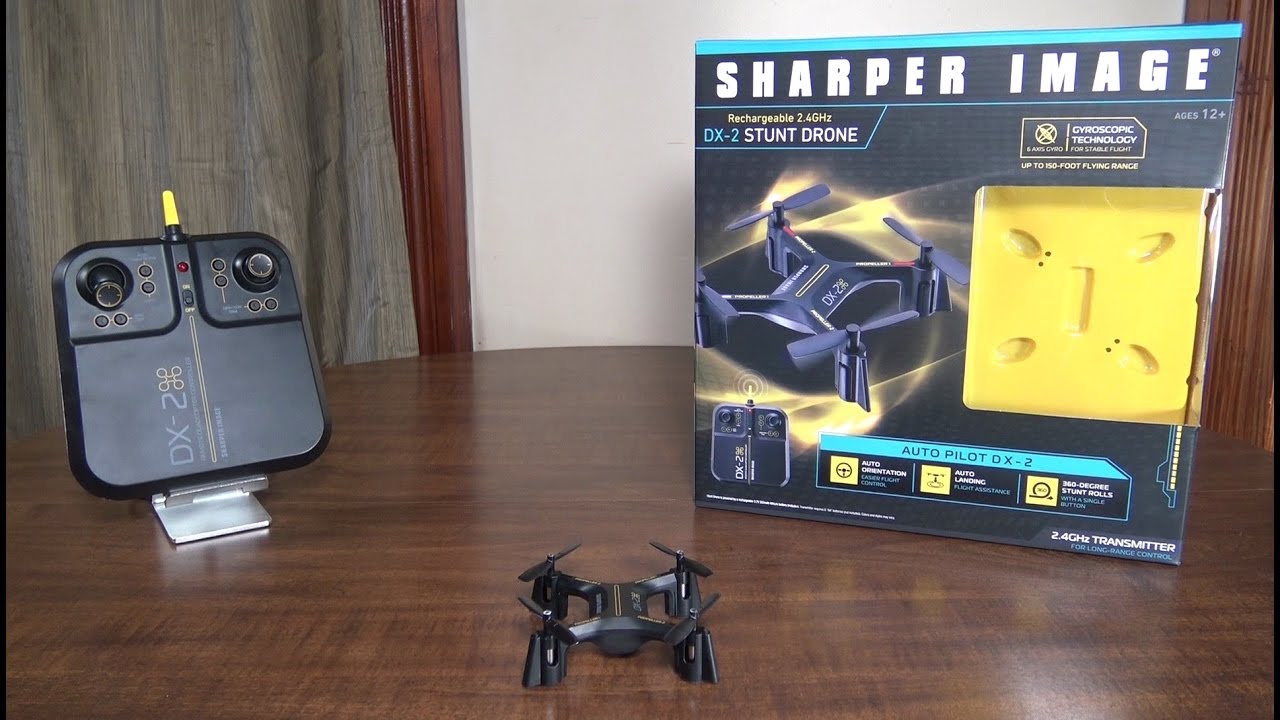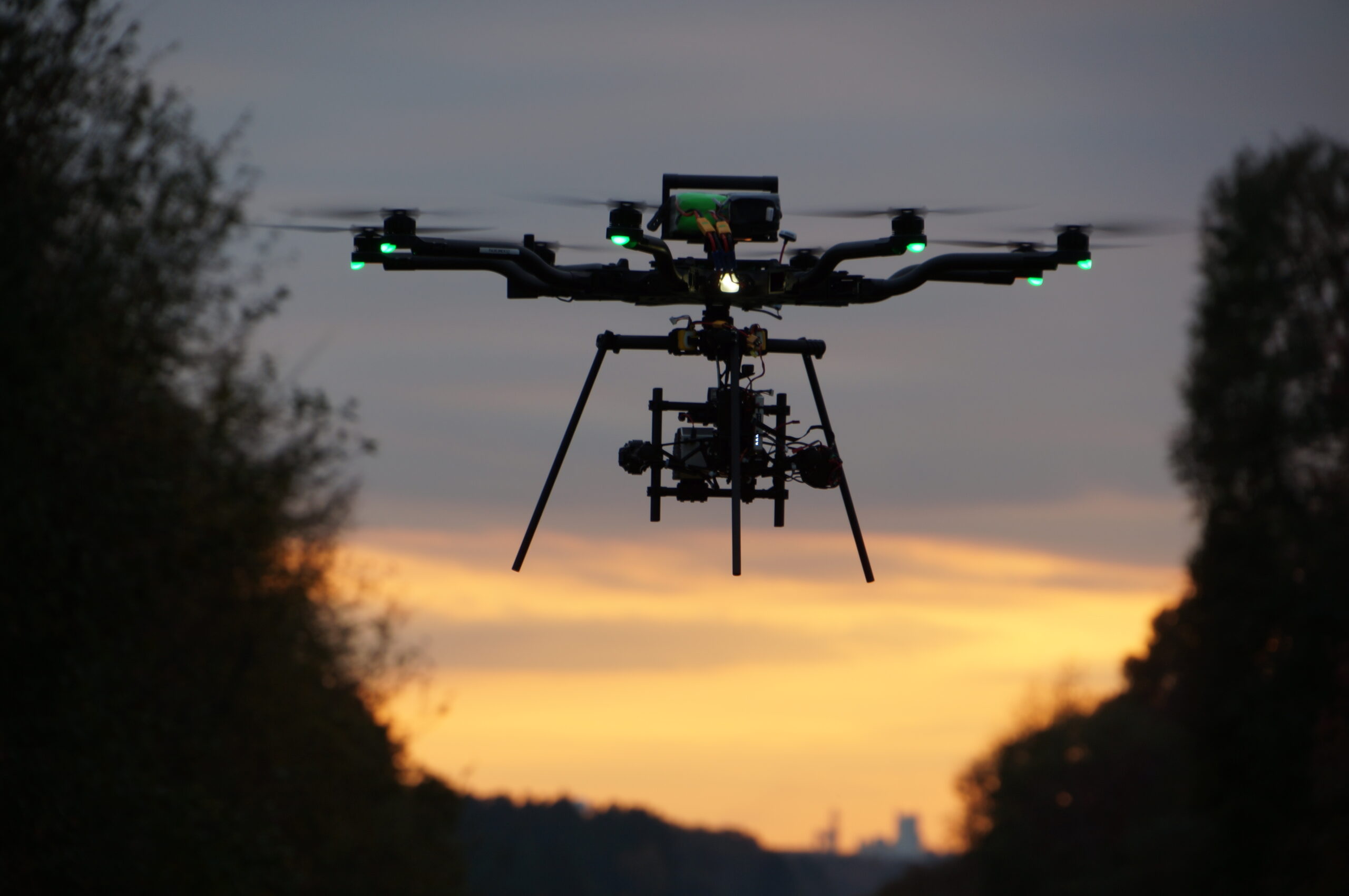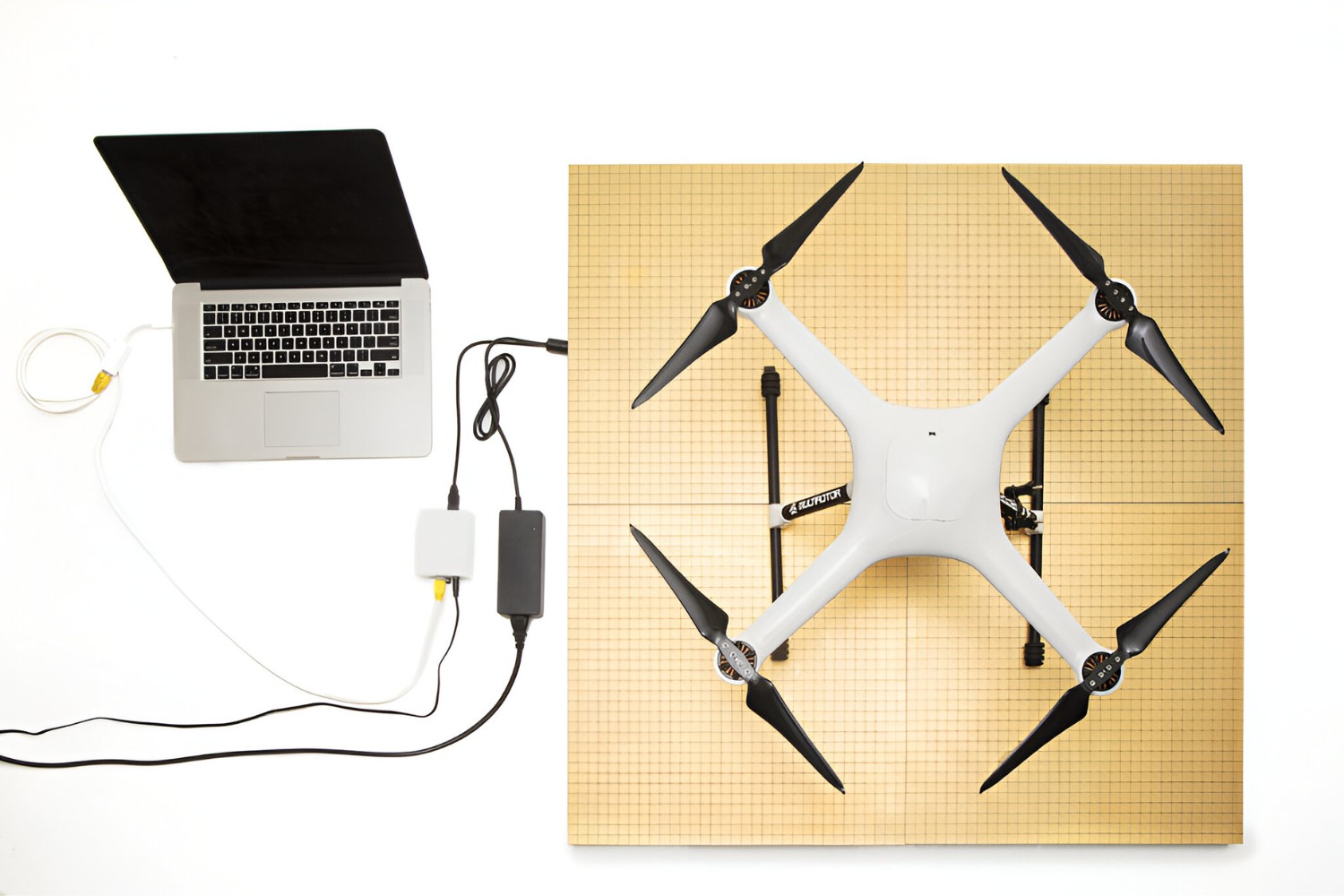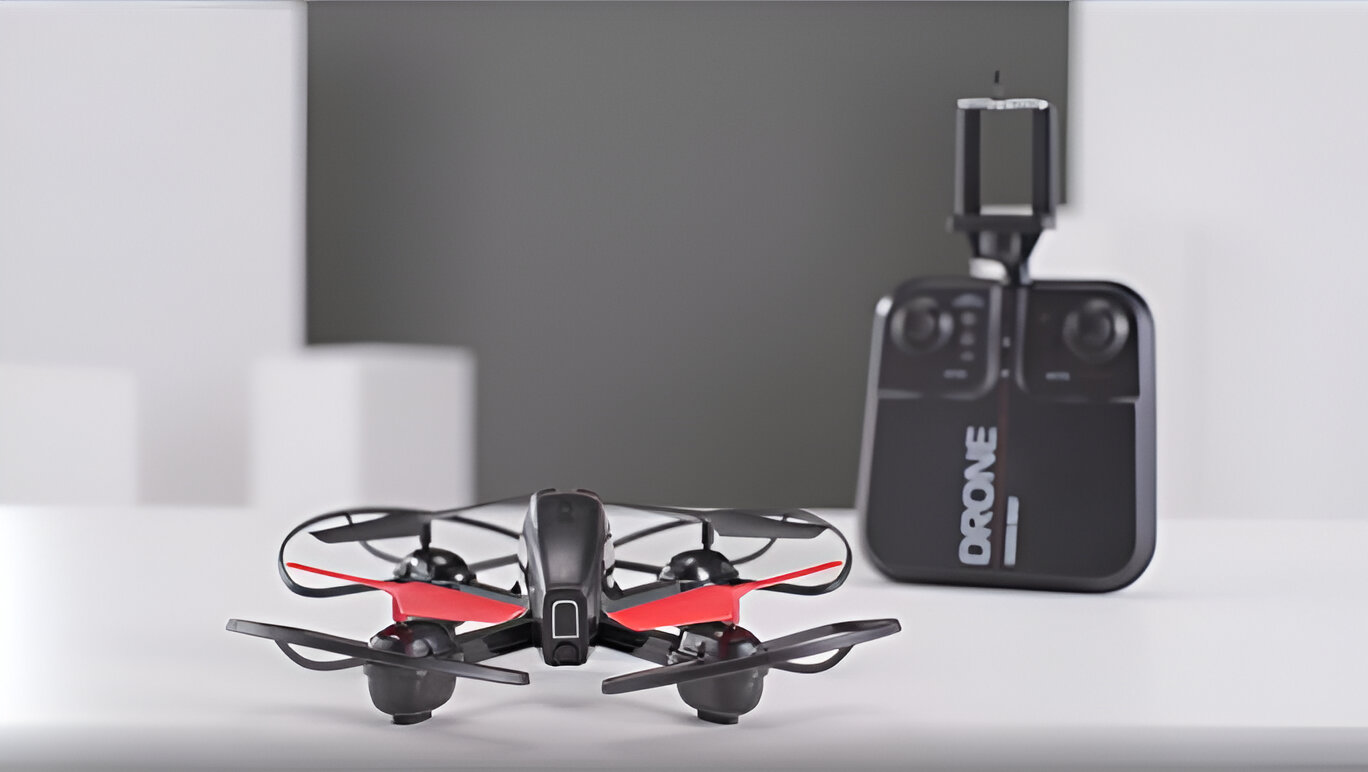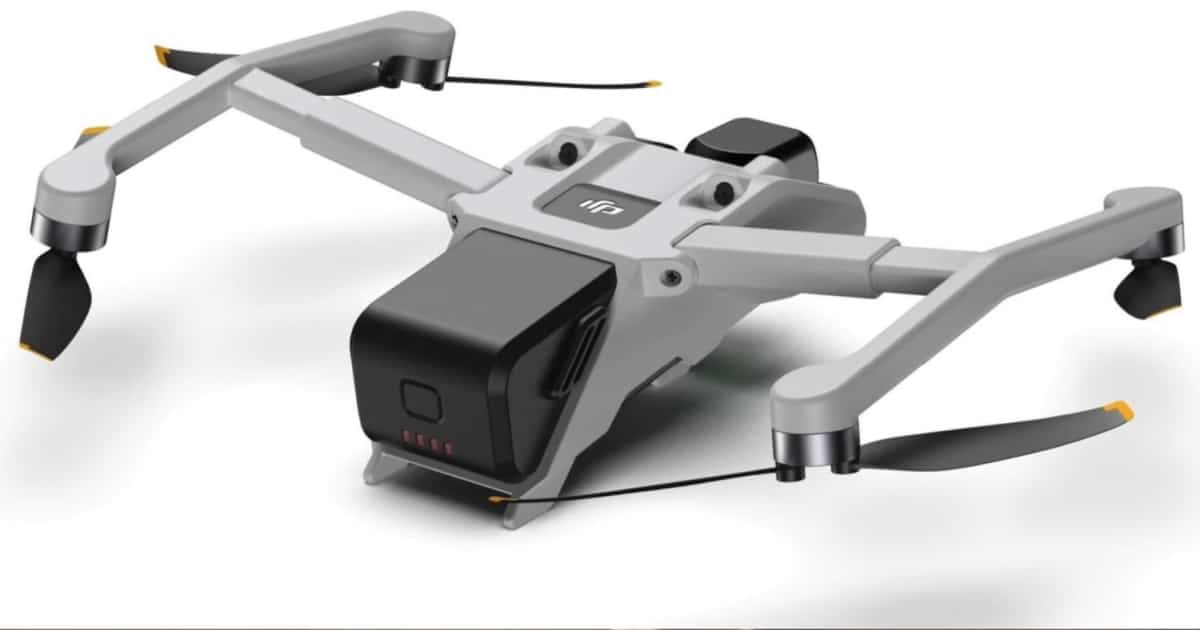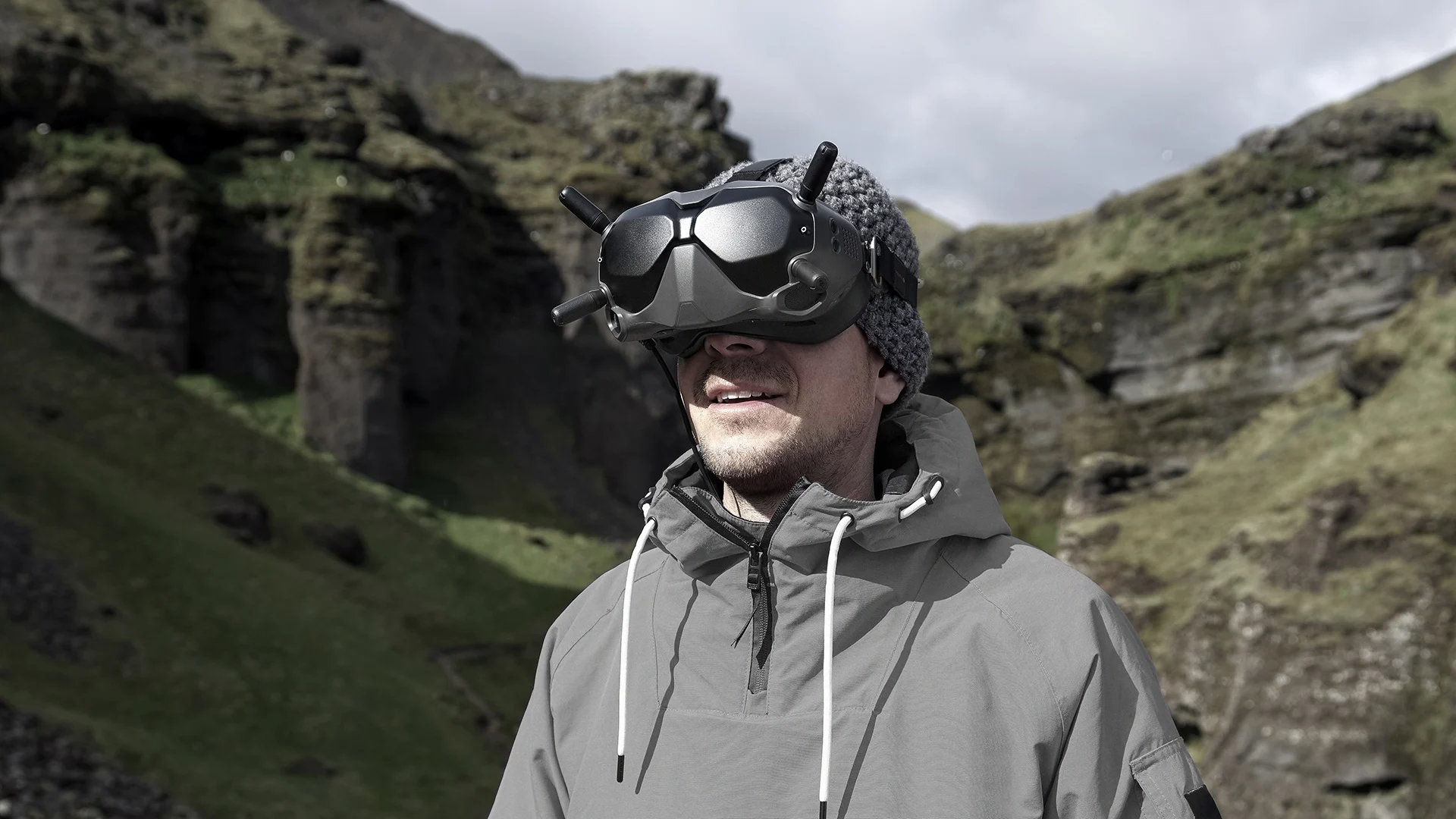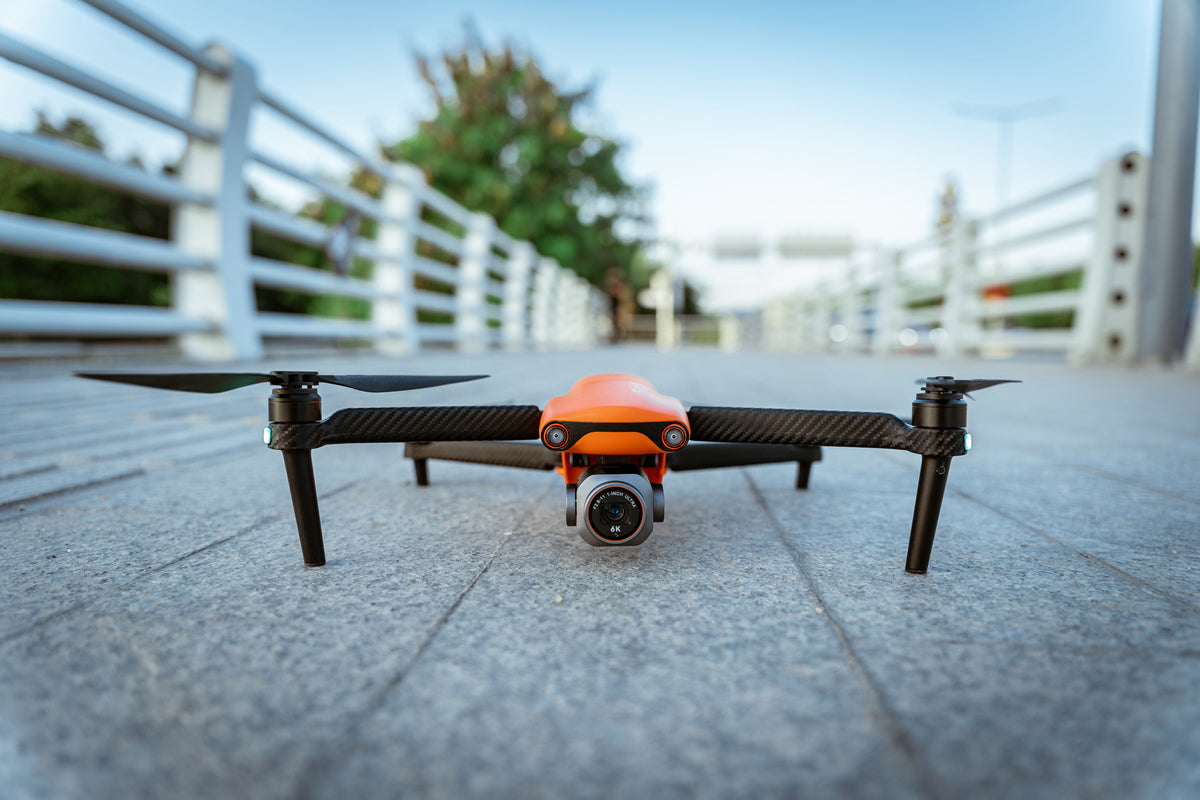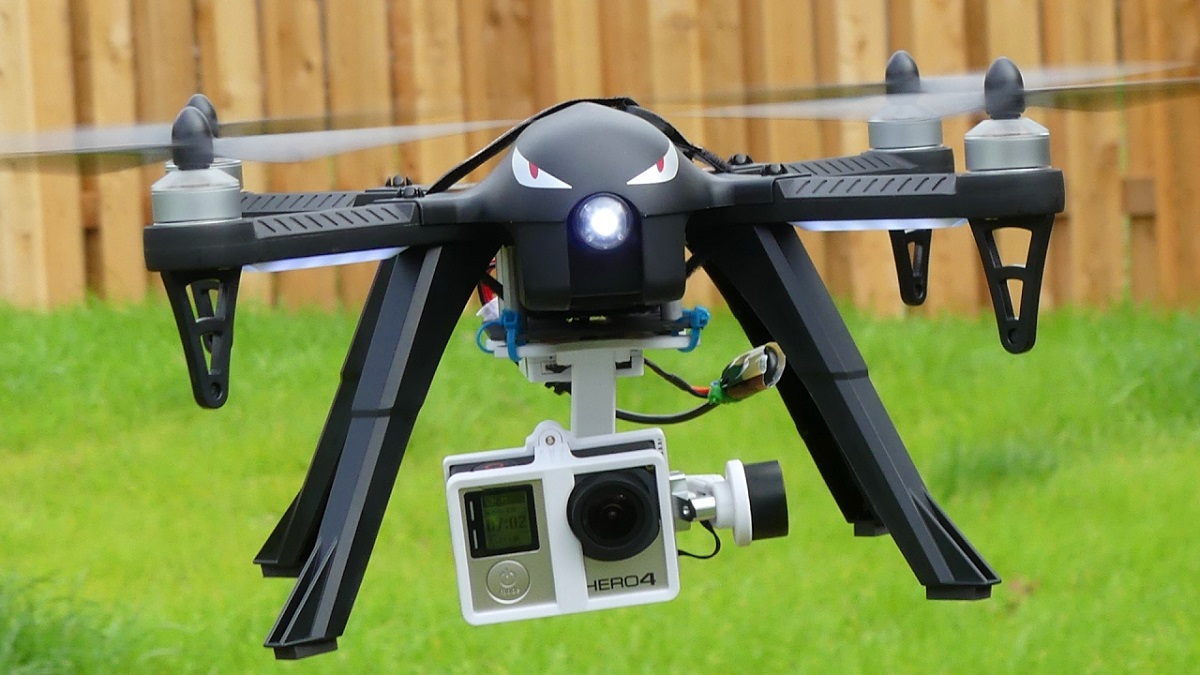Introduction
The Sharper Image Drone is a cutting-edge device that offers the thrill and excitement of flying right at your fingertips. Whether you’re a hobbyist looking for a new adventure or an aspiring aerial photographer, mastering the art of flying a drone is essential to capturing stunning aerial footage. In this guide, we will walk you through the steps to fly the Sharper Image Drone more effectively and achieve sharper and smoother flights.
Before you take off with your drone, it’s crucial to familiarize yourself with the pre-flight checklist. This includes ensuring your drone is fully charged, the batteries are properly installed, and the remote control is paired with the drone. Calibrating the drone is another essential step to ensure stability and accuracy during flight.
Once the initial setup is complete, you can dive into learning the basic controls and functions of the drone. This includes mastering the take-off and landing procedures, as well as controlling altitude and speed. Understanding the camera function is also crucial for capturing amazing aerial shots.
During your flight, it’s important to be aware of potential obstacles and know how to avoid them to prevent accidents or damage to your drone. Troubleshooting tips will also be provided to help you overcome any issues that may arise during your drone flying experience.
By the end of this guide, you will have the knowledge and skills to fly the Sharper Image Drone with precision and confidence. So, let’s get started with the pre-flight checklist and dive into the wonderful world of drone flight!
Pre-flight Checklist
Before taking your Sharper Image Drone out for a flight, it’s essential to go through a pre-flight checklist to ensure a safe and successful flight. Following these steps will help you avoid any potential issues and ensure a smooth flight experience.
1. Charging the Drone: Make sure your drone is fully charged before you take it out for a flight. Connect the drone to a power source using the provided charging cable and allow it to charge until the battery is at its maximum capacity. This will ensure that you have enough power to fly for the desired duration.
2. Installing the Batteries: Check that the batteries in your drone are properly installed. Ensure that they are securely in place and properly connected to the drone’s power system. Loose or incorrectly installed batteries can lead to unexpected power loss during the flight.
3. Pairing the Remote Control with the Drone: Follow the manufacturer’s instructions to pair the remote control with your drone. This usually involves turning on both the drone and the remote control, then following a specific sequence of buttons or commands to establish a connection. A successfully paired remote control ensures that you have full control over your drone during flight.
4. Calibrating the Drone: Calibrating the drone is crucial for stable and accurate flight. Most drones have an automatic calibration feature that can be triggered by following a set of instructions in the user manual. Calibration ensures that the drone’s internal sensors accurately detect its orientation, enabling smooth and precise flight maneuvers.
5. Check the Environment: Before taking off, survey the surrounding area for any potential obstacles or hazards that could interfere with your flight. Look for trees, buildings, power lines, or any other objects that could pose a risk to your drone. It’s important to fly in an open and safe area to minimize the chances of accidents or damage.
6. Check the Weather: Keep an eye on the weather conditions before flying your drone. Avoid flying in strong winds, rain, or snow, as these environmental factors can affect the stability and control of your drone. Ideal conditions include calm winds, clear skies, and good visibility.
By following this pre-flight checklist, you can ensure that your Sharper Image Drone is in excellent condition and ready for a successful flight. Taking the time to properly charge the drone, install the batteries, pair the remote control, calibrate the drone, and check the environment and weather conditions will help you fly with confidence and avoid any potential issues during your flight.
Charging the Drone
Before embarking on your drone flying adventure, it is crucial to ensure that your Sharper Image Drone is fully charged. By giving your drone enough power, you can enjoy longer flight durations and uninterrupted aerial fun. Here’s a step-by-step guide to properly charge your drone:
1. Find the Charging Port: Locate the charging port on your drone. It is typically located on the side or underneath the drone. Consult the user manual if you are unsure about the exact location.
2. Connect the Charging Cable: Plug one end of the charging cable into the charging port of the drone. Ensure it is securely inserted to guarantee a stable connection. The other end of the cable should be plugged into a power source, such as a USB wall adapter or a computer’s USB port.
3. Verify the Charging Process: Once the drone is connected to a power source, the charging process will begin. Look for an indicator light on the drone, which typically turns solid or blinks to signify that the battery is charging. Refer to the user manual for specific instructions on interpreting the charging status.
4. Monitor the Charging Time: Pay attention to the estimated charging time mentioned in the user manual or provided by the manufacturer. Typically, it takes around 60-90 minutes for a full charge, but this may vary depending on the model and battery capacity. Avoid leaving the drone unattended while charging and ensure that it is placed on a stable surface to prevent any mishaps.
5. Wait for Full Charge: Allow the drone to charge until it reaches its maximum capacity. The charging indicator light will usually turn solid or stop blinking when the battery is fully charged. Do not disconnect the drone from the power source before it reaches a complete charge to avoid shortened flight durations.
6. Disconnect the Charging Cable: Once the drone is fully charged, disconnect the charging cable from both the drone and the power source. Carefully remove the cable from the charging port to avoid damaging the drone or the cable.
By following these steps, you can ensure that your Sharper Image Drone is adequately charged and ready for a thrilling flight experience. Remember to charge your drone prior to each flight to maximize your enjoyment and capture magnificent aerial footage without any interruptions. Now that your drone is charged, it’s time to move on to the next step of the pre-flight checklist!
Installing the Batteries
Properly installing the batteries in your Sharper Image Drone is a crucial step to ensure a smooth and uninterrupted flying experience. Incorrectly installed or loose batteries can lead to power loss during flight, resulting in a potentially disastrous outcome. Here’s a step-by-step guide to correctly install the batteries in your drone:
1. Check the Battery Compartment: Locate the battery compartment on your drone. It is usually positioned on the underside or in the body of the drone. Consult the user manual if you are unsure about the exact location or how to access the battery compartment.
2. Determine Battery Type and Quantity: Before installing the batteries, identify the correct battery type required for your Sharper Image Drone. Most drones utilize rechargeable lithium-ion batteries, but it’s essential to confirm this information in the user manual or on the manufacturer’s website. Also, check the required number of batteries for your drone, as some models might require multiple batteries.
3. Insert the Batteries: Once you have identified the battery type and quantity, carefully insert the batteries into the battery compartment following the polarity markings. Typically, there will be clear indications showing the correct way to align the positive (+) and negative (-) terminals of the batteries with the corresponding markings in the compartment. Ensure a snug fit and that the batteries are securely in place to prevent any disconnections during flight.
4. Close the Battery Compartment: After inserting the batteries, gently close the battery compartment cover. It should securely latch in place, sealing the compartment and preventing any accidental battery dislodgment during flight. Double-check to ensure that the cover is fully closed and locked to avoid any potential issues during your flight.
5. Test Battery Connection: Turn on your drone and verify that the batteries are correctly installed. The drone should power on without any issues, and the battery level indicator should display the appropriate charge status. If there are any abnormalities or the drone fails to power on, recheck the battery installation and confirm that all contacts are properly aligned.
6. Battery Replacement: Over time, the batteries in your drone may need to be replaced due to wear and tear or diminished capacity. Follow the manufacturer’s guidelines on battery replacement and ensure that you use the recommended replacement batteries for your drone model.
By following these steps, you can confidently install the batteries in your Sharper Image Drone, ensuring a reliable power supply for your flights. Properly installed batteries not only enhance your flying experience but also contribute to the safety and longevity of your drone. Now that the batteries are securely in place, let’s move on to the next step of the pre-flight checklist!
Pairing the Remote Control with the Drone
In order to take full control of your Sharper Image Drone, you need to pair the remote control with the drone itself. This pairing process establishes a secure and reliable connection between the two devices, allowing you to maneuver the drone with precision. Here’s a step-by-step guide on how to pair the remote control with your drone:
1. Power On the Drone: Start by turning on your drone. Locate the power switch or button, usually located on the drone’s body, and ensure that it is in the “on” position. Some drones power on automatically when the battery is connected, so refer to the user manual for specific instructions.
2. Turn on the Remote Control: Next, turn on the remote control. Most remotes have a power button that needs to be pressed and held for a few seconds until the remote powers on. Make sure that the batteries in the remote control are adequately charged to avoid any connection issues.
3. Enable Pairing Mode: Check the user manual to find out how to put your drone into pairing mode. This process can vary depending on the drone model. In most cases, you will need to press a specific button sequence on the remote control or the drone itself to enable pairing mode. The drone and remote control should now start searching for each other’s signals.
4. Wait for the Pairing: Once the pairing mode is enabled, wait for a few moments while the drone and remote control establish a connection. Pay attention to the remote control’s display or LED indicators for any signs of successful pairing. This may include a solid light or an audible confirmation sound.
5. Confirm the Pairing: After the pairing process is complete, check that the drone and the remote control are properly connected. This can be done by verifying the signal strength or ensuring that the remote control’s display correctly shows the drone’s status. You may also test the control inputs to see if the drone responds accordingly.
6. Re-pair if Necessary: In case the initial pairing attempt fails or the connection is lost, refer to the user manual for instructions on how to re-pair the drone and the remote control. This may involve repeating the previous steps or performing a specific reset procedure.
By following these steps, you can successfully pair your remote control with your Sharper Image Drone and have complete control over its movement. A properly paired remote control allows you to navigate the drone with precision and enjoy a seamless flying experience. Now that your drone and remote control are paired, you are one step closer to soaring through the skies!
Calibrating the Drone
Calibrating your Sharper Image Drone is a vital step to ensure stable and accurate flight. By calibrating the drone, you ensure that its internal sensors detect its orientation correctly, leading to smoother maneuvers and improved control. Here’s how you can calibrate your drone:
1. Find a Suitable Location: Choose an open, flat area away from any interference such as magnetic fields or Wi-Fi signals. This ensures accurate calibration without any external disturbances that may hinder the process.
2. Power on the Drone: Turn on the drone and make sure it is in a stationary position. Give it a few moments to properly initialize and stabilize.
3. Access the Calibration Option: Refer to your drone’s user manual to determine the method for accessing the calibration option. This may involve specific button combinations or accessing the drone’s settings through its dedicated app.
4. Choose the Calibration Type: Most drones offer two types of calibration: the gyro calibration and the compass calibration. The gyro calibration ensures the drone’s internal gyroscopes are properly aligned, while the compass calibration ensures the internal compass accurately detects its direction. Follow the instructions for the specific calibration type you want to perform.
5. Perform the Calibration: The calibration process usually requires you to follow a series of on-screen prompts or specific movements with the drone. Pay close attention to the instructions provided and follow them accurately.
6. Complete the Calibration: Once the calibration is complete, the drone may indicate a successful calibration process. This may include a brief LED light sequence or an indication on the remote control’s display. It is essential to ensure that the drone is on a stable surface and in a stationary position during this process for accurate calibration.
7. Test the Calibration: After calibrating, it is recommended to perform a quick test flight to verify that the drone is responding correctly. Take note of any unusual behaviors or stability issues, as this may indicate the need for further calibration or troubleshooting.
Calibrating the drone before each flight or whenever you notice unusual flight characteristics is crucial for optimal performance and control. By following the calibration process, you can ensure that your Sharper Image Drone maintains stability, accuracy, and responsiveness during your flying sessions. Now that your drone is perfectly calibrated, let’s delve into understanding the basic controls and functions!
Basic Controls and Functions
Understanding the basic controls and functions of your Sharper Image Drone is essential for commanding the aircraft with precision and confidence. Familiarizing yourself with these controls will allow you to navigate the drone effectively and capture breathtaking aerial footage. Let’s explore the fundamental controls and functions of your drone:
1. Throttle: The throttle control, usually found on the left side of the remote control, is responsible for controlling the drone’s altitude. This control allows you to make the drone ascend or descend. Move the throttle stick up to increase the altitude and down to decrease it.
2. Yaw: The yaw control, typically located on the left or right side of the remote control, allows you to rotate the drone clockwise or counterclockwise. This maneuver is useful for changing the direction the drone is facing without changing its position. By moving the yaw stick to the left or right, the drone will rotate accordingly.
3. Roll: The roll control, also known as the left-right movement, is controlled by the right stick on the remote control. Moving the stick to the left or right will cause the drone to tilt and move horizontally in the corresponding direction. Mastering this control allows you to move the drone laterally and perform stunning aerial maneuvers.
4. Pitch: The pitch control, controlled by the forward-backward movement of the right stick, allows you to make the drone move forward or backward. Pushing the stick forward will move the drone forward, while pulling it backward will make the drone move backward. This control is vital for flying the drone in different directions and achieving smooth flight paths.
5. Auto-Hover: Many drones are equipped with an auto-hover feature that allows the drone to maintain a stable position in the air without any manual input. This function is typically activated by pressing a specific button on the remote control. Auto-hover is useful for capturing steady aerial shots or taking a momentary break during flight.
6. Speed Control: Most drones have adjustable speed settings to cater to different flying preferences and experience levels. Typically indicated as Low, Medium, and High, these settings determine the drone’s responsiveness and agility. Start with the lowest speed setting if you are a beginner and gradually increase it as you become more comfortable and proficient in flying.
It’s important to familiarize yourself with these basic controls and functions before taking your Sharper Image Drone for a flight. Practice maneuvering the drone in an open area, gradually incorporating different control combinations and flight patterns. Understanding how each control affects the drone’s movement will enable you to navigate with precision and confidence. Now that you have a solid grasp of the drone’s basic controls, let’s move on to taking off and landing!
Taking Off and Landing
Taking off and landing your Sharper Image Drone smoothly and safely is crucial for every flight. Understanding the correct procedures and techniques for these maneuvers will ensure a successful flight experience. Here’s a step-by-step guide on how to take off and land your drone:
Taking Off:
- Find a suitable takeoff area that is clear of any obstacles and people.
- Make sure your drone is properly calibrated and its batteries are fully charged.
- Power on both the drone and the remote control.
- Ensure that the drone is positioned on a flat surface.
- Slowly push the throttle stick upward to increase the drone’s altitude.
- As the drone lifts off, maintain a steady pace with the throttle to control the ascent.
- Monitor the drone’s stability and adjust the throttle as needed to maintain a smooth climb.
Landing:
- Choose a clear landing area that is free from any obstructions, hazards, or people.
- Reduce the throttle slowly to decrease the drone’s altitude.
- Monitor the drone’s descent and make any necessary adjustments to maintain a controlled landing.
- As the drone reaches a few feet from the ground, carefully decrease the throttle further to ensure a gentle landing.
- Once the drone is close to the ground, reduce the throttle to zero, allowing it to come to a complete stop.
- Ensure the drone is on a stable surface before powering it off.
It’s important to practice taking off and landing your drone in an open and safe area to gain confidence and proficiency in executing these maneuvers. Remember to avoid abrupt throttle adjustments and maintain control throughout the flight. By mastering the art of taking off and landing, you’ll be able to fly your Sharper Image Drone with ease and achieve smooth, professional-looking flights. Now that you know how to take off and land, let’s explore strategies for flying with precision!
Flying with Precision
Flying your Sharper Image Drone with precision is key to capturing amazing aerial footage and achieving smooth, controlled flights. By mastering certain techniques and strategies, you can enhance your ability to pilot the drone with accuracy and finesse. Here are some tips to help you fly your drone with precision:
1. Practice in an Open Space: Find a spacious area free of obstacles where you can practice flying your drone. This will provide you with ample room to maneuver and minimize the risk of collisions or accidents during flight.
2. Start with Basic Maneuvers: Begin by mastering basic maneuvers such as ascending, descending, forward and backward movement, and left and right turns. Familiarize yourself with the controls and practice these movements in a controlled manner to build your flying skills.
3. Keep a Steady Hand: Maintaining a steady hand while controlling the drone is crucial for achieving smooth flight. Avoid making sudden or jerky movements with the controls and aim for gradual and smooth inputs to ensure precise flying.
4. Adjust the Sensitivity Settings: Most drones offer sensitivity settings that allow you to adjust the responsiveness of the controls. Start with lower sensitivity settings if you’re a beginner and gradually increase them as you become more comfortable with the drone’s flight characteristics.
5. Pay Attention to Orientation: Always keep an eye on the orientation of the drone during flight. This will help you maintain control and avoid confusion, especially when the drone is facing away from you. Using the drone’s front-facing lights as a reference can be helpful in identifying its orientation.
6. Use Slow and Smooth Movements: Utilize slow and smooth movements when controlling the drone for precise flying. Gradually increase and decrease the throttle, and make gentle adjustments to the roll and pitch controls to maintain stability and accuracy in your flight path.
7. Use the Drone’s Camera to Aid Navigation: If your drone is equipped with a camera, utilize the live feed to help navigate and maintain awareness of the surroundings. This can assist in avoiding obstacles and positioning the drone precisely for capturing the desired shots.
8. Fly in Optimal Weather Conditions: Favor flying in calm weather conditions with minimal wind to ensure better control over the drone. Strong winds can affect stability and accuracy, making it challenging to achieve precise flight maneuvers.
9. Practice Regularly: Like any skill, practice makes perfect. Set aside dedicated time to practice flying your drone and continuously challenge yourself with new flight patterns and maneuvers. The more you practice, the more confident and proficient you will become.
By following these tips and strategies, you can elevate your drone flying skills and achieve precise and controlled flights. Remember to stay patient, practice regularly, and prioritize safety during every flight. Now that you have mastered flying with precision, let’s delve into techniques for altitude and speed control!
Controlling Altitude and Speed
Having the ability to control the altitude and speed of your Sharper Image Drone is essential for achieving smooth and controlled flights. By mastering the techniques for adjusting these factors, you can enhance your flying experience and capture stunning footage. Let’s explore how you can control the altitude and speed of your drone:
1. Altitude Control:
Altitude control refers to adjusting the height at which your drone flies. Here are some tips on controlling the altitude:
- Use the throttle control: The throttle stick on the remote control allows you to increase or decrease the altitude of the drone. Pushing the throttle stick forward will make the drone ascend, while pulling it backward will cause the drone to descend. Practice making small, gradual adjustments to maintain the desired altitude smoothly.
- Monitor the drone’s altitude: Pay close attention to the drone’s altitude display or use visual cues to ensure that it stays at the desired height. Avoid flying too close to the ground or flying too high to prevent accidents or loss of control.
- Consider environmental factors: Take into account any air currents or wind conditions that may affect the drone’s altitude. Adjust the throttle accordingly to maintain a stable and consistent flight path.
2. Speed Control:
The speed at which your drone travels can greatly impact the quality of your footage and the overall flying experience. Here’s how you can control the speed of your drone:
- Adjust the throttle: The throttle control not only controls altitude but also affects the speed of the drone. Pushing the throttle stick further forward will increase the drone’s speed, while pulling it back will slow it down. Gradually adjust the throttle to achieve the desired speed, ensuring smooth transitions.
- Consider flight modes: Some drones offer different flight modes that affect the speed and responsiveness of the aircraft. Experiment with different modes, such as a sport mode or a cinematic mode, to find the right balance of speed for your flight needs.
- Be mindful of surrounding obstacles: When flying at higher speeds, it’s important to be vigilant of any potential obstacles in the flight path. Maintain a safe distance from trees, buildings, and other objects to avoid collisions and accidents.
Mastering the control of altitude and speed is crucial for achieving precise and controlled flights with your Sharper Image Drone. Continuously practice these techniques to improve your flying skills and capture stunning aerial shots. Remember to consider factors such as wind conditions and obstacles in your flight path to ensure a safe and enjoyable flying experience. Now that you have a grasp on altitude and speed control, let’s dive into using the camera function of your drone!
Using the Camera Function
The camera function of your Sharper Image Drone allows you to capture breathtaking aerial photographs and videos. By understanding how to effectively use the camera, you can elevate your drone flying experience and capture stunning images. Let’s explore how to make the most out of the camera function:
1. Camera Orientation:
Ensure that the camera is properly oriented before your flight to capture the desired shots. Many drones allow you to adjust the camera’s angle remotely or through an app. Experiment with different angles to achieve unique perspectives and compositions.
2. Camera Settings:
Take advantage of the camera settings available on your drone. Adjusting settings such as exposure, white balance, and resolution can help you achieve the best possible image quality. Refer to the user manual or the drone’s app for instructions on accessing and modifying these settings.
3. Stabilization Techniques:
Leverage the stabilization features of your drone’s camera to capture smooth and steady footage. Many drones have built-in gimbal systems that help stabilize the camera, reducing vibrations and shaky footage. Ensure that the gimbal is calibrated correctly to optimize stabilization.
4. Framing and Composition:
Use your creativity to compose visually appealing shots. Consider elements such as leading lines, symmetry, and points of interest to add depth and interest to your photographs. Experiment with different compositions and perspectives to capture unique and captivating images.
5. Timing and Lighting:
Be mindful of the lighting conditions when capturing aerial images. Golden hour, the period shortly after sunrise or before sunset, often provides soft and warm lighting that can enhance your photographs. Experiment with different times of day to achieve the desired lighting effects.
6. Utilize Camera Modes:
Your Sharper Image Drone may offer various camera modes, such as burst mode, time-lapse, or panorama mode. Explore these different modes to add variety to your shots. Burst mode can capture a rapid succession of images, time-lapse mode can capture the passage of time, and panorama mode can create wide-angle panoramic images.
7. Review and Edit:
After your flight, take the time to review and edit your captured media. Utilize photo and video editing software, filters, and other editing tools to enhance your images and videos. This post-processing step allows you to fine-tune exposure, color, and composition to achieve the desired visual outcome.
By understanding and utilizing the camera function of your Sharper Image Drone, you can create stunning aerial imagery and videos. Experiment with different settings, angles, and techniques to capture unique and awe-inspiring shots. Remember to respect privacy and abide by local regulations while capturing images with your drone. Now that you know how to make the most of your drone’s camera, let’s explore how to avoid obstacles during flight!
Avoiding Obstacles
Obstacle avoidance is a crucial skill to master when flying your Sharper Image Drone. Avoiding obstacles not only ensures the safety of your drone but also protects the surroundings and minimizes the risk of accidents or damage. Here are some techniques and tips to help you navigate around obstacles during your flights:
1. Plan Your Flight Path:
Before takeoff, plan your flight path to avoid potential obstacles. Identify any trees, buildings, power lines, or other structures that may pose a risk to your drone. Designate a clear and open flight area to minimize the chances of collisions.
2. Maintain Visual Contact:
Always maintain visual contact with your drone during flight. It’s essential to keep your eyes on the drone to spot and react to any obstacles that may come into the flight path. Avoid relying solely on the live feed from the drone’s camera as it may limit your perception of the surrounding environment.
3. Utilize Obstacle Avoidance Technology:
If your drone is equipped with obstacle avoidance technology, such as proximity sensors or collision avoidance systems, make sure to enable and utilize these features. These technologies can provide an extra layer of protection by detecting obstacles and alerting you to potential collisions.
4. Fly at a Safe Distance:
Maintaining a safe distance from obstacles is crucial for preventing accidents. Make it a point to fly at a distance that allows you to react and maneuver appropriately if an obstacle comes into sight. Giving yourself ample space reduces the risk of collision and provides more time to avoid any potential hazards.
5. Be Aware of Surroundings:
Stay vigilant and be aware of your surroundings during flight. Scan the area continuously for any potential obstacles that may suddenly appear. Keep an eye out for moving objects, such as birds or other drones, that may intrude into your flight path.
6. Fly in Optimal Weather Conditions:
Weather conditions can affect your ability to observe and avoid obstacles. Strong winds, low visibility, or adverse weather conditions may limit your control and perception. Fly in optimal weather conditions with clear skies and minimal wind to ensure better obstacle avoidance.
7. Practice Maneuvering Skills:
Regular practice is key to improving your maneuvering skills and enhancing your ability to avoid obstacles. Practicing different flight patterns, quick turns, and abrupt stops can help you develop the reflexes necessary to navigate around obstacles swiftly and effectively.
By implementing these techniques and strategies, you can significantly reduce the risk of collisions and ensure safe flights with your Sharper Image Drone. Prioritize safety and always exercise caution when flying in areas with potential obstacles. With practice and attentiveness, you will gain confidence in avoiding obstacles and enjoy smoother and safer flights. Now that you know how to avoid obstacles, it’s time to explore troubleshooting tips to overcome any challenges that may arise during your drone flying experience!
Troubleshooting Tips
While flying your Sharper Image Drone, you may encounter various challenges or issues that require troubleshooting. It’s important to be prepared and equipped with the knowledge to overcome these obstacles. Here are some troubleshooting tips to help you address common problems that may arise during your drone flying experience:
1. Drone Won’t Power On:
If your drone refuses to power on, check the battery connection to ensure it is correctly installed. Verify that the batteries are charged and properly inserted. If the issue persists, consult the user manual for specific troubleshooting steps, such as resetting the drone or contacting customer support for assistance.
2. Unstable Flight or Drifting:
If your drone experiences unstable flight or drifts off course, recalibrate the drone’s gyro and compass. Improper calibration can affect the drone’s stabilization and navigation. Find a suitable location, follow the calibration steps outlined in the user manual, and ensure the drone is on a stable surface during the process.
3. Erratic Controls or Control Signal Loss:
If you notice erratic control responses or experience control signal loss during flight, check the remote control’s battery level and connection. Ensure that the remote control and drone are within the recommended range for signal transmission. Avoid flying in areas with strong radio frequency interference that may disrupt the control signal.
4. Poor Battery Life:
If you are experiencing reduced battery life during flight, make sure to fully charge the batteries before each flight session. Check for any battery drain issues by examining the drone and remote control’s power settings and reducing unnecessary power-consuming functions. Consider investing in spare batteries to extend your flight time.
5. Camera Malfunctions:
If your drone’s camera malfunctions, check the camera settings and connections to ensure they are properly configured and secured. Ensure that the camera lens is clean and free from any obstructions. If the issue persists, refer to the user manual or contact the manufacturer for further troubleshooting or repair options.
6. GPS Signal Issues:
When using GPS functions, ensure that your drone has a clear line of sight to the sky to acquire a strong GPS signal. Avoid flying in areas with poor GPS coverage or obstructed satellite signals, such as near tall buildings or under dense foliage. If you encounter GPS signal loss, relocate to an open area or reset the GPS settings on your drone.
7. Motor Issues or Noises:
If you notice abnormal motor sounds or vibrations, inspect the propellers for any damage or obstructions. Replace damaged or worn propellers as needed. If the motor issues persist, consult the user manual for further troubleshooting steps or contact customer support for assistance.
Remember to always refer to the user manual provided with your Sharper Image Drone for model-specific troubleshooting tips and guidelines. Additionally, stay up-to-date with firmware updates and software patches released by the manufacturer to address any known issues or bugs. By following these troubleshooting tips, you can overcome common challenges and enjoy a smoother and more enjoyable drone flying experience.
Conclusion
Congratulations! You have now gained valuable knowledge on how to fly your Sharper Image Drone with precision and skill. By following the pre-flight checklist, charging the drone, installing the batteries, pairing the remote control, and calibrating the drone, you have set a solid foundation for a successful flight. Understanding the basic controls and functions, such as taking off and landing, controlling altitude and speed, and utilizing the camera function, empowers you to capture stunning aerial footage and achieve smooth flights.
Additionally, you have learned important strategies for avoiding obstacles and troubleshooting common issues that may arise during your drone flying adventures. By implementing these tips and techniques, you can ensure safer flights, overcome challenges, and enhance your overall drone flying experience.
Remember, practice makes perfect. Take the time to familiarize yourself with the controls, fly regularly, and explore new flight patterns and maneuvers. The more you fly, the more proficient and confident you will become. Always prioritize safety, follow local regulations, and be aware of your surroundings to ensure a positive and enjoyable drone flying experience.
Now, it’s time to take to the skies and unleash the full potential of your Sharper Image Drone. So, grab your remote control, head to an open space, and let your creativity soar with the exhilarating world of aerial photography and flight!







